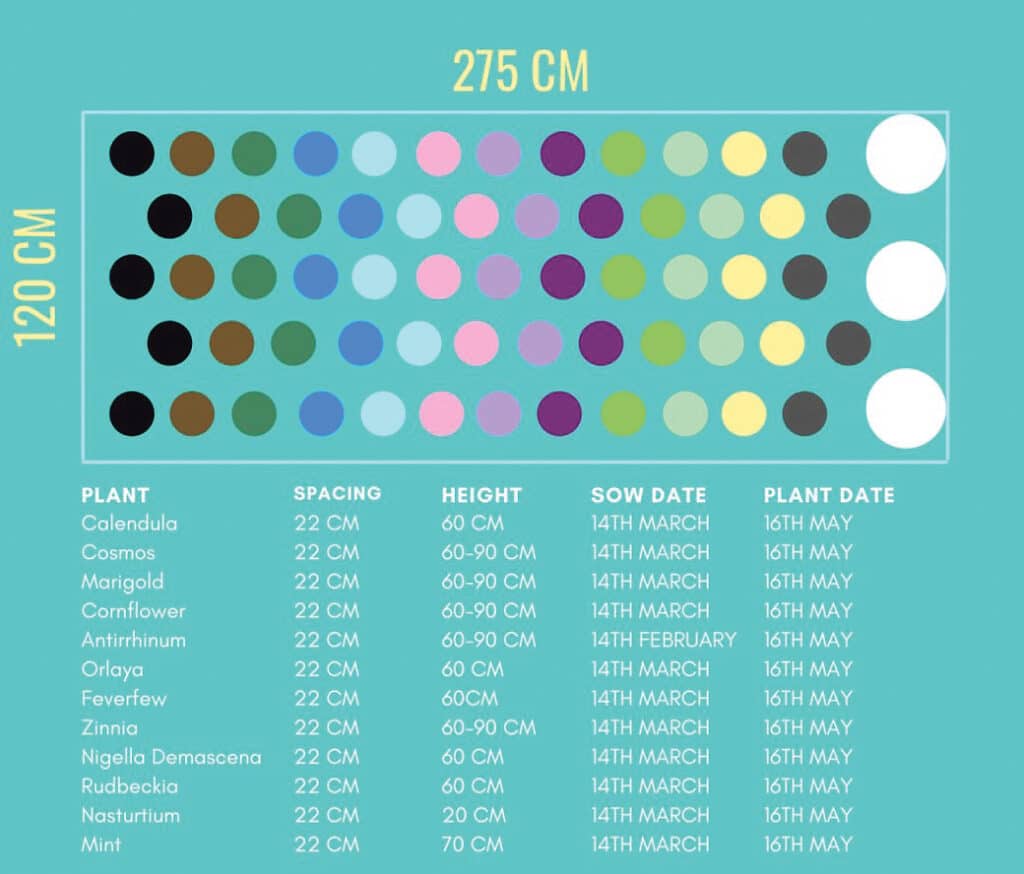Mags Riordan of Bumblebee Farm continues to guide us all through the planning, planting and caring of a bed for cut flowers. By the time summer arrives the bed should boast an abundance of pollinator-friendly flowers ready for cutting and enjoying. This month we’re planting.

It’s the month of May so that means planting time. You’ve nurtured your babies and hardened them off and now we’re going to get them into the ground. The grid I use isn’t a traditional straight line like when planting veg. Instead, you’re using a slightly more intensive method with closer spacing and the rows are designed to utilise more ground by alternating each row spacing this in turn gives roots more room and access to nutrients.
Putting in lines for each row is recommended, as it can be a bit confusing and, if this method is new to you, it’s easy to get lost in keeping the rows straight. I know this from experience!
Start with the first row of five plants, coming in six inches or 15cm from the edge and run your first string the length of the bed – a piece of bamboo cane either end of the bed stuck in the ground will do for this and tie the string taut to this. Mark your next row nine inches or 23cm and run the string again. Your next three rows will have that nine inch spacing.
With rows marked, your first three plants will go in alternative rows and the last two will be planted 4.5ins or 11cm further down the bed. This gives the appearance of being off-centre and is where it can get confusing, hence the string as a guide. The second row of plants is put in at nine inches or 22cm from the last plant. We use a length of stick marked with the spacing to help guide us with the correct distances because I find it hard to judge this by eye alone. This saves time in the long run and using the string keeps the rows straight.
If you’ve added manure and food at bed preparation time, then you can plant straight into the soil although we do add some mycorrhizal fungi to the planting holes to give the roots a boast and help them absorb more water and nutrients, but they also help soil microbial build up; this leads to a healthy living soil, which in turn keeps plants healthier and better-equipped to deal with stress and adverse weather.
We will be demonstrating this planting method, how to make your own compost tea, and putting in stakes and netting to support the plants as they grow on our next Instagram live.
Bee Kind.


